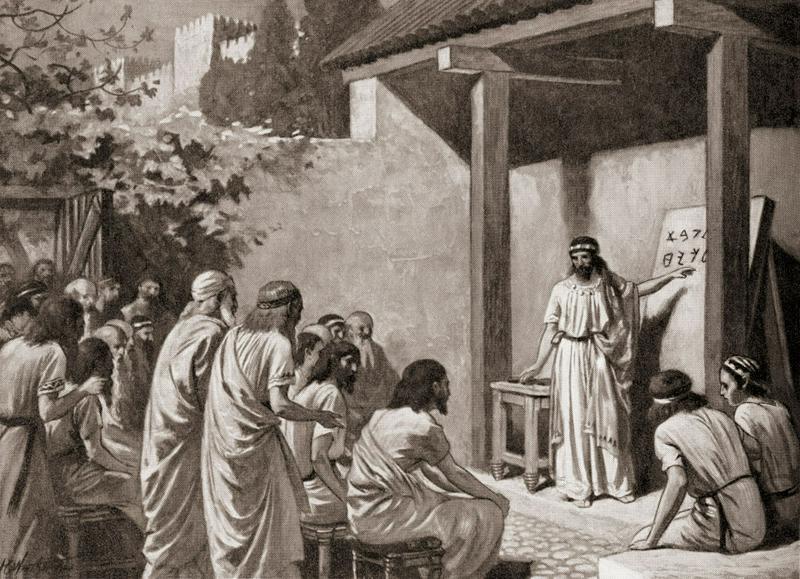The Phoenician Alphabet: History Of Where Your Language Comes From
By | March 15, 2021

We take it for granted, but have you ever wondered why the alphabet is, like, like that? You'd have to ask the Romans, who gave us the Latin alphabet that we use today. But they would probably tell you to ask the Phoenicians.
Ancient Alphabets
Researchers believe the ancient Sumerian cuneiform is the oldest written language, although it's technically not really a language. The symbols ancient Sumerians carved into clay, though multitudinous (there were nearly 1,000), didn't represent sounds or letters but whole words or phrases. That meant you couldn't "sound out" an unfamiliar string of symbols. Such was the case for the similar Egyptian system of hieroglyphics as well.
That all changed with the Phoenicians, a people that thrived along the eastern coast of the Mediterranean Sea from about 1500 to 300 B.C.E. Their trade brought them in contact with people from Egypt, India, Africa, Greece, Western Asia, and even Ancient Britain. To facilitate communication between these wildly different groups, the Phoenicians developed the first alphabet.

The Phoenician Alphabet
According to the Greek historian Herodotus, the Phoenician alphabet was the work of Prince Cadmus, marking the first time in history that written language was composed of letters that each represented a different sound and turning Cadmus into a hero to the Greek people. For the first time, there was a connection between written and spoken language; as long as the reader knew what sound each letter represented, they could "sound out" words. Remember your Hooked On Phonics? That's why it was called that.
There were plenty of differences between the Phoenician alphabet and the Latin alphabet that we use today, however. The Phoenician alphabet contains no vowels and only 22 letters, as opposed to the Latin alphabet's 26. It's also written from right to left, like Hebrew and Arabic. Centuries later, the Greeks added vowels to the Phoenician alphabet, and the Romans made some changes of their own. They're the reason we have F's and S's, although they really botched it with the removal of G, Y, and Z. How are you supposed to have generations?!
Those Phoenicians were onto something, though. They also invented numbers to augment their business practices, and their system looks an awful lot like the Roman numerals that we still use today.

The Phoenician Influence
The Phoenician alphabet influenced just about every written language that came after it. Not only was it much simpler and easier to learn than complex cuneiform writing, it could be adapted to a number of other languages. It was also instrumental in shaking up the class structures of ancient societies. Before alphabets, written language was so difficult to learn that only a few people—usually those in power—were truly literate. That meant the dissemination of information was controlled by the privileged elite, but the alphabet gave the masses unprecedented access to information. The next time you look something up without any help from an oppressor, thank a Phoenician, though you might have trouble finding one. They're rather thin on the ground these days.

